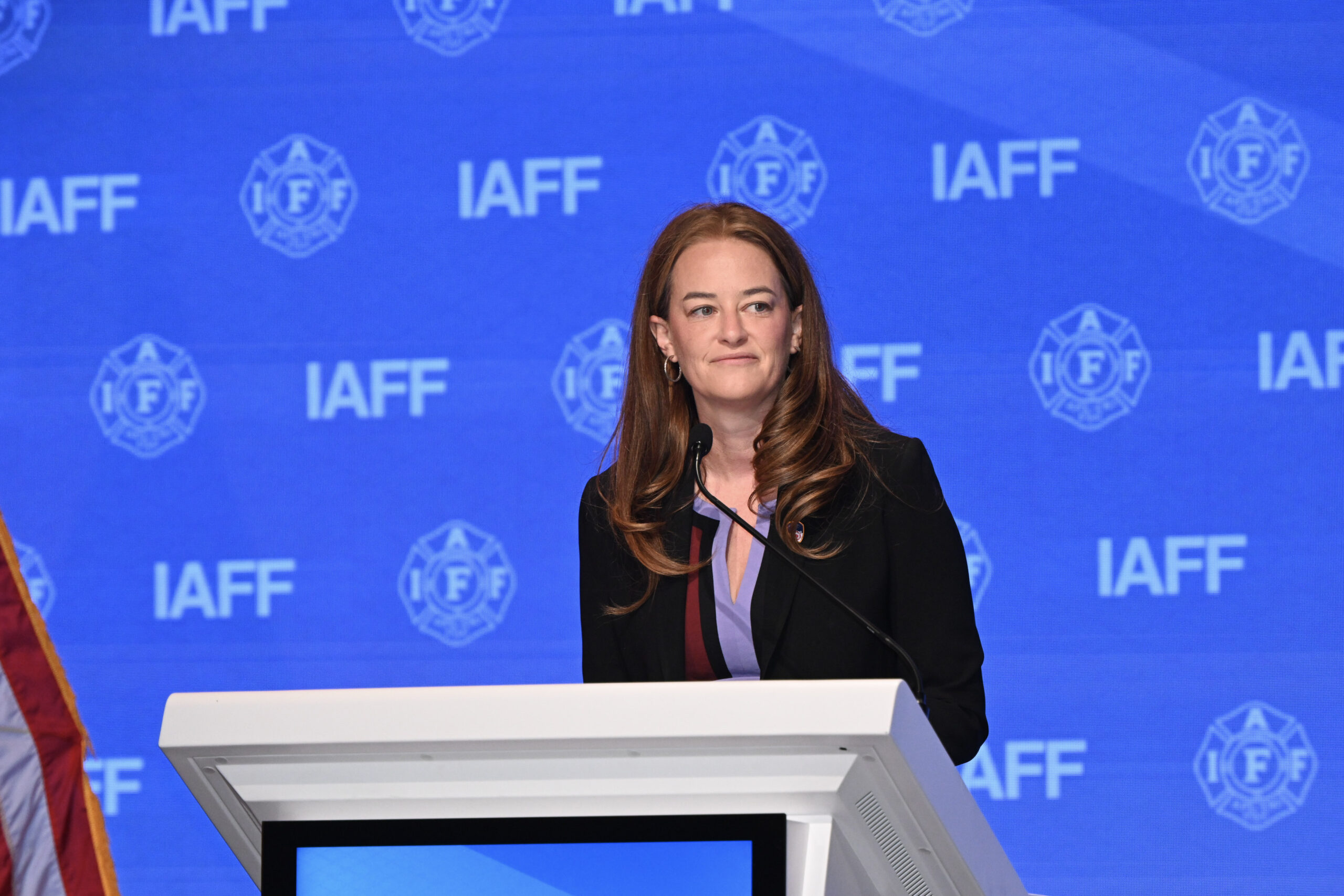
Hundreds of IAFF members are in New York City attending the joint John P. Redmond Health and Safety Symposium/Dominick F. Barbera EMS Conference to learn the latest strategies for staying safe on the job and preventing line-of-duty deaths.
General President Edward Kelly set the tone for the symposium, themed Excellence in Action,in his opening remarks.
“We fight for better pay, decent pensions, and access to health care. But none of that matters if we get killed needlessly,” said Kelly. “We knew when we took this job, we don’t always come home. But that doesn’t mean we can’t strive to make our job as safe as possible. And that’s why we are here this week: to learn all that we can to reduce the number of line-of-duty deaths.”
Uniformed Fire Officers Association (UFOA) Local 854 President James McCarthy and Uniformed Firefighters Association (UFA) Local 94 President Andrew Ansbro both noted as they welcomed the symposium attendees to New York that it is important to learn from tragedies like Sept. 11 to stay safe on the job.
McCarthy said it was not just the collapsing of the two towers that killed hundreds of fire fighters, but also the dangerous chemicals that were released into the atmosphere. Alongside the 343 fire fighters who died on 9/11, an additional 336 have succumbed to the effects of 9/11-related toxic exposure.
“We are still fighting to maintain federal funding that will take care of those members who developed cancer and other illnesses after September 11,” said McCarthy. “We are also not forgetting those members who died. Last night, we were at St. Patrick’s Cathedral for mass to say prayers in their memory. And we can also honor them by getting that training to stay safe on that job like we are doing here this week.”
“It’s not just our members exposed on 9/11 who are developing cancer. We must do all that we can to protect current and future generations from getting sick. That’s why we are developing a long overdue program to clean our gear more often,” said Ansbro. “And to the members who traveled here to New York, I want to welcome you here and advise you to work hard, play hard, but bring something to your membership to ensure they live a long, happy life.”
Redmond/Barbera was initially scheduled for New York City two years ago to honor the 20th anniversary of Sept. 11, but was delayed due to COVID. Kelly’s opening comments also honored the 343 FDNY members who died that day, as well as Keith Roma, a member of the New York Fire Patrol.
To extinguish cancer in the fire service, the IAFF is actively engaged in developing the next generation of toxic-free turnout gear.
“It boggles my mind that maybe the biggest exposure risk we take each day is when we put on our bunker gear,” said Kelly. “We have workshops here at Redmond that will teach you mitigation strategies that you can take back home to help keep your members safe. Meanwhile, this IAFF is partnering with several groups to conduct studies to prevent PFAS exposure and cancer risk. We are going to do whatever it takes to scrub cancer from the fire service.”
While cancer remains the number one killer in the fire service, it is not the only danger fire fighters face on the job. FDNY Chief of Department Jack Hodgens cautioned Redmond attendees to keep up with their training, even if it’s a skill that’s not used very often.
Hodgens told the story of a November 2022 fire that ignited on the 20th floor of an apartment building. Fighters arrived on the scene to learn that three people were trapped. Due to the logistics of the fire scene, fire fighters had to enter the floor above the fire and conduct a life-saving rope rescue..
“This is a lesson in ‘when you need it, you need it.’ Rope rescues are quite difficult, so you need to know what you are doing,” said Hodgens. “There was no time to think. Our FDNY had to rely on their training to do this right. Those three are alive today because of that training.”
United States Fire Administrator Dr. Lori Moore-Merrell was on hand to discuss the U.S. Fire Administration’s (USFA) progress in addressing the nation’s fire problem as outlined during the administration’s 2022 summit.
The critical issues being addressed by the USFA are cancer, behavioral health, wildfire, building codes, and recruitment. Dr. Moore-Merrell anticipates that technological challenges like lithium-ion batteries will be added to the list of priorities during the next summit planned for later this year.
“Things like electric bikes do make our lives easier, but there is an unrecognized fire risk that comes with them,” she said. “Getting the word out is something we need to work on, but we cannot do it alone. The #FireServiceOneVoice strategy says that ‘where we can, we stand together’ and the USFA, the IAFF, and other emergency agencies need to stand together to conquer the challenges we face.”
FDNY Commissioner Laura Kavanagh said technology that uses lithium-ion batteries poses a significant fire risk in New York City.
“The fire caused by a failed lithium battery is more intense and spreads more quickly than a traditional fire. That coupled with the chemicals these batteries release when they fail endangers our members and the citizens of our city,” said Kavanagh, who noted that the heat from one battery-related fire in Brooklyn was so intense that the building’s fire alarms and sprinkler systems were rendered useless.
Throughout the week, IAFF members have the opportunity to attend a plethora of workshops on cancer prevention, workplace violence prevention, building a peer support program, disaster preparedness, and more.







